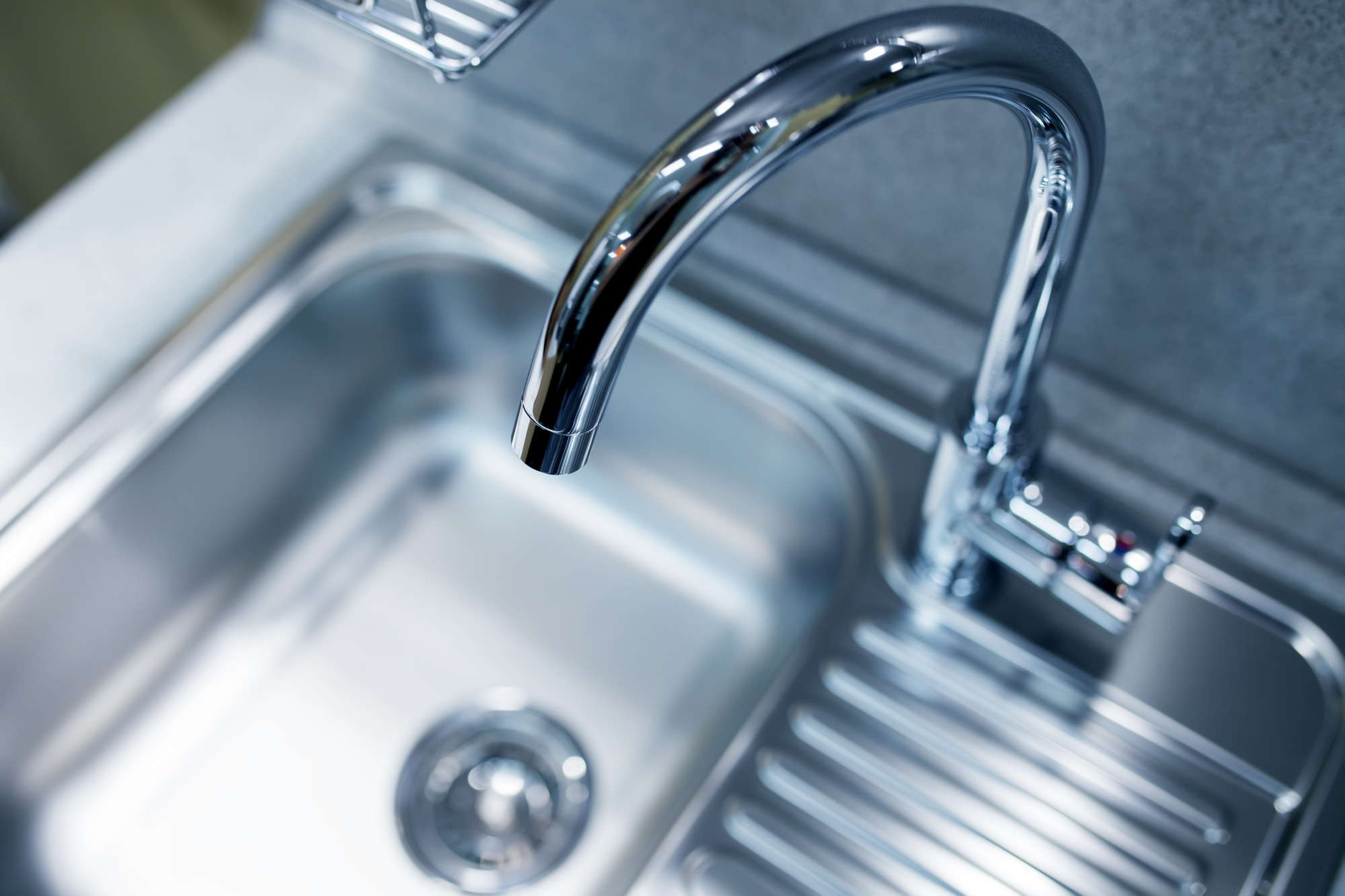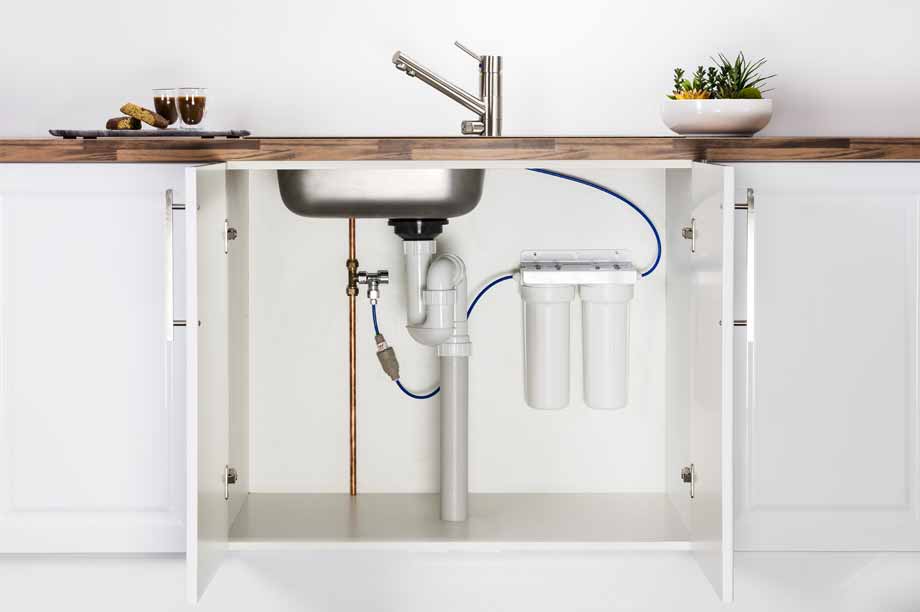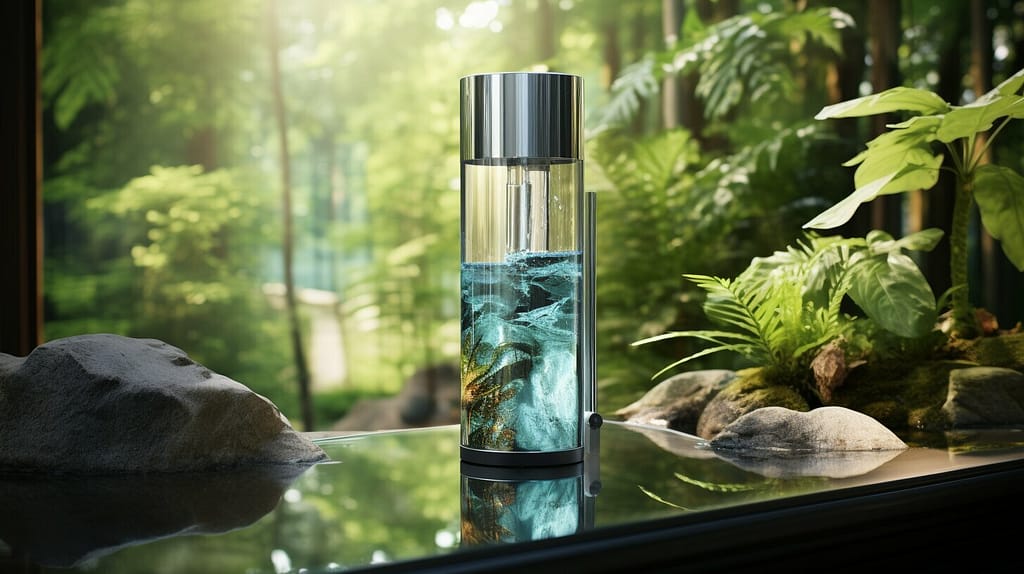Are you tired of constantly buying bottled water or dealing with the unpleasant taste of tap water? Adding a water filter to your kitchen sink is a simple and cost-effective solution. Not only will it improve the taste of your water, but it will also provide cleaner and healthier drinking water for you and your family. Here's a step-by-step guide on how to install a water filter under your sink.How to Install a Water Filter Under the Sink
Adding a water filter to your kitchen sink may seem like a daunting task, but it's actually quite simple. The first step is to decide on the type of water filter you want. There are various options available, such as carbon filters, reverse osmosis systems, and UV filters. Each type has its own advantages and disadvantages, so it's important to do your research and choose the one that best fits your needs.How to Add a Water Filter to Your Kitchen Sink
If you're a DIY enthusiast, you can save money by installing the water filter yourself. Most under-sink water filters come with detailed instructions, making it easy for you to install it on your own. However, keep in mind that some filters may require additional tools or skills, so make sure to read the instructions carefully before starting the installation process.DIY: Installing an Under-Sink Water Filter
If you're not comfortable with DIY projects, you can always hire a professional to install the water filter for you. But if you want to give it a try, here's a step-by-step guide that will help you install a water filter under your sink: Step 1: Shut off the water supply to your sink. You can usually find the shut-off valve under the sink or in the basement. Step 2: Remove any items stored under the sink to give you enough room to work. Step 3: Locate the cold water supply line and disconnect it from the faucet. Step 4: Install the T-valve onto the cold water supply line. This valve will allow you to divert water to the filter. Step 5: Connect the water filter to the T-valve using the provided tubing. Make sure to follow the instructions provided with your specific filter. Step 6: Install the faucet adapter onto the faucet head. This will allow the filtered water to flow through the faucet. Step 7: Connect the tubing from the filter to the faucet adapter. Step 8: Turn on the water supply and check for any leaks. Step 9: Run water through the filter for a few minutes to flush out any carbon particles. Step 10: Enjoy your freshly filtered water!Step-by-Step Guide to Adding a Water Filter to Your Kitchen Sink
If you don't want to go through the hassle of installing a water filter under your sink, there are other easy options available. You can purchase a faucet-mounted filter or a pitcher filter. These options are convenient and don't require any installation. However, keep in mind that they may not be as effective as an under-sink water filter.Easy Ways to Add a Water Filter to Your Kitchen Sink
There are many benefits to adding a water filter to your kitchen sink. The most obvious one is that it will improve the taste and quality of your water. But that's not all. A water filter can also remove harmful contaminants, such as chlorine, lead, and bacteria, making your drinking water safer for consumption. It can also save you money in the long run by reducing the need for purchasing bottled water.Benefits of Adding a Water Filter to Your Kitchen Sink
With so many options available, it can be overwhelming to choose the right water filter for your kitchen sink. Some of the top-rated water filters include the Brita On Tap Faucet Water Filter System, the Home Master Artesian Full Contact Reverse Osmosis System, and the APEC Top Tier 5-Stage Ultra Safe Reverse Osmosis System. Do your research and choose the one that best fits your needs and budget.Top Water Filters for Kitchen Sinks
When choosing a water filter for your kitchen sink, there are a few factors to consider. These include the type of filter, the filter's effectiveness in removing contaminants, the filter's maintenance requirements, and the cost. It's also important to check if the filter is certified by a reputable organization, such as NSF or WQA.How to Choose the Right Water Filter for Your Kitchen Sink
Before adding a water filter to your kitchen sink, it's essential to know your local water quality. This will help you determine the type of filter you need and the contaminants you want to remove. You should also be aware of the maintenance requirements of the filter and how often you'll need to replace the filter cartridges.Installing a Water Filter: What You Need to Know
Here are some additional tips to keep in mind when adding a water filter to your kitchen sink: Tip 1: Make sure to follow the manufacturer's instructions carefully for proper installation and maintenance. Tip 2: Test the water after installation to ensure the filter is working correctly. Tip 3: Replace the filter cartridges regularly to maintain the filter's effectiveness. Tip 4: Consider investing in a water filter with a built-in indicator that alerts you when it's time to replace the cartridges. In conclusion, adding a water filter to your kitchen sink is a simple and effective way to improve the taste and quality of your drinking water. Whether you choose to install it yourself or hire a professional, the benefits of having clean and safe water at your fingertips are worth it. So go ahead and make the switch to filtered water today!Tips for Adding a Water Filter to Your Kitchen Sink
Why Adding a Water Filter to Your Kitchen Sink is a Smart Choice for Your Home

The Importance of Clean Water in Your Home
 In today's world, where the quality of our water is constantly being threatened by pollution and contaminants, it has become more important than ever to ensure that the water we consume is clean and safe for our health. This is especially true when it comes to the water we use in our homes for cooking, drinking, and cleaning. While many of us may assume that the tap water in our homes is safe to use, the truth is that it may contain harmful chemicals and bacteria that can have negative effects on our health. This is where a water filter for your kitchen sink comes in.
In today's world, where the quality of our water is constantly being threatened by pollution and contaminants, it has become more important than ever to ensure that the water we consume is clean and safe for our health. This is especially true when it comes to the water we use in our homes for cooking, drinking, and cleaning. While many of us may assume that the tap water in our homes is safe to use, the truth is that it may contain harmful chemicals and bacteria that can have negative effects on our health. This is where a water filter for your kitchen sink comes in.
The Benefits of a Water Filter for Your Kitchen Sink
 One of the most convenient and effective ways to ensure that your household water is clean and safe is by installing a water filter for your kitchen sink. Not only does it remove impurities and contaminants from your water, but it also provides a host of other benefits for your home and family.
A water filter can improve the taste and smell of your water, making it more enjoyable to drink and cook with. It also removes chlorine and other chemicals that can be harmful to your skin and hair when used for washing and bathing.
Additionally, a water filter can save you money in the long run, as you won't have to constantly buy bottled water or replace appliances and plumbing that have been damaged by hard water.
One of the most convenient and effective ways to ensure that your household water is clean and safe is by installing a water filter for your kitchen sink. Not only does it remove impurities and contaminants from your water, but it also provides a host of other benefits for your home and family.
A water filter can improve the taste and smell of your water, making it more enjoyable to drink and cook with. It also removes chlorine and other chemicals that can be harmful to your skin and hair when used for washing and bathing.
Additionally, a water filter can save you money in the long run, as you won't have to constantly buy bottled water or replace appliances and plumbing that have been damaged by hard water.
Easy Installation and Maintenance
 One of the best things about adding a water filter to your kitchen sink is that it is a simple and hassle-free process. Most models are easy to install and can be done without the need for a plumber. Once installed, maintenance is also minimal and typically only requires replacing the filter cartridge every few months. This makes it a cost-effective and convenient option for ensuring that your household water is clean and safe for your family.
One of the best things about adding a water filter to your kitchen sink is that it is a simple and hassle-free process. Most models are easy to install and can be done without the need for a plumber. Once installed, maintenance is also minimal and typically only requires replacing the filter cartridge every few months. This makes it a cost-effective and convenient option for ensuring that your household water is clean and safe for your family.
Choose the Right Water Filter for Your Needs
 When it comes to selecting a water filter for your kitchen sink, there are various options available to suit different needs and budgets.
You can choose from a variety of filter types, such as activated carbon, reverse osmosis, or UV filters, depending on your water quality and specific concerns.
It is important to do some research and choose a reputable brand to ensure that you are getting a high-quality filter that will effectively purify your water.
When it comes to selecting a water filter for your kitchen sink, there are various options available to suit different needs and budgets.
You can choose from a variety of filter types, such as activated carbon, reverse osmosis, or UV filters, depending on your water quality and specific concerns.
It is important to do some research and choose a reputable brand to ensure that you are getting a high-quality filter that will effectively purify your water.
In Conclusion
 Investing in a water filter for your kitchen sink is a smart choice for your home and family. Not only does it provide clean and safe water for consumption and household use, but it also offers a range of other benefits for your health and budget. So don't hesitate to take the necessary steps to ensure that your household water is clean and pure, starting with adding a water filter to your kitchen sink.
Investing in a water filter for your kitchen sink is a smart choice for your home and family. Not only does it provide clean and safe water for consumption and household use, but it also offers a range of other benefits for your health and budget. So don't hesitate to take the necessary steps to ensure that your household water is clean and pure, starting with adding a water filter to your kitchen sink.












































































